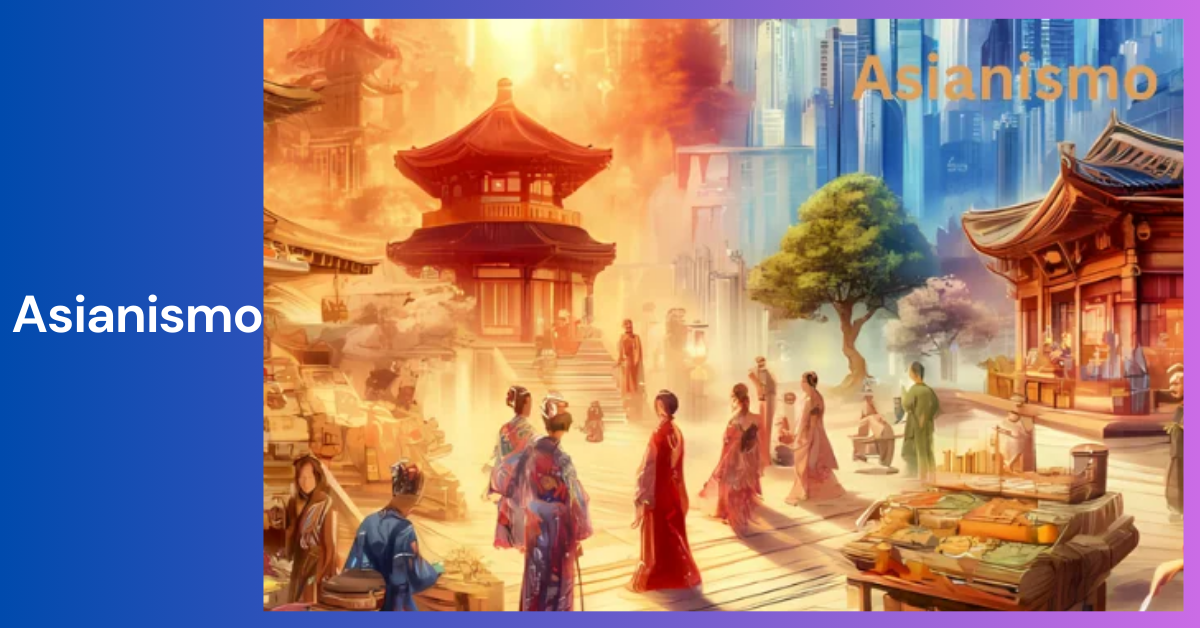
In a world increasingly characterized by multiculturalism and global interconnectedness, the term “Asianismo” emerges as a significant concept that encapsulates the essence of Asian identity and influence.
Asianismo celebrates the essence of Asian identity and influence, highlighting the continent’s rich cultural diversity. It embodies both traditional and modern elements, reflecting how Asian cultures enhance and enrich the global cultural landscape.
Originating from the broader context of Asian cultural and social influence, Asianismo goes beyond mere cultural appreciation; it represents a celebration of the rich diversity, historical depth, and evolving narratives within Asian communities.
This article aims to provide a thorough exploration of Asianismo, delving into its origins, significance, and implications for both Asian and non-Asian communities, particularly in the United States.
Defining Asianismo
The Origins of the Term
Asianismo, derived from the combination of “Asia” and the suffix “-ismo” (which implies a doctrine or practice), can be understood as the embodiment of Asian cultural and social principles.
The term is not merely a reflection of Asian culture but an active celebration and assertion of Asian identity and values in a global context.
Conceptualizing Asianismo
Asianismo is more than a theoretical construct; it is a living, evolving expression of the diverse cultures and histories of Asia.
It encompasses the myriad traditions, philosophies, and artistic expressions that originate from the continent.
By examining Asianismo, we gain insight into how these elements interact with global cultural landscapes, influencing everything from art and literature to social norms and international relations.
Historical Context and Evolution
Historical Roots of Asian Influence
Asia, with its vast and varied history, has significantly influenced global cultures for centuries.
From the ancient Silk Road to modern-day globalization, Asian cultures have continuously impacted economies, philosophies, and artistic traditions across the world.
Asianismo reflects this enduring influence, celebrating historical interactions and contributions from Asia.
Evolution of Asianismo Through the Ages
The concept of Asianismo has evolved alongside Asia’s historical transformations. Initially, it may have been tied closely to traditional practices and ancient cultural heritage.
However, as Asia modernized and globalized, Asianismo adapted, incorporating contemporary elements and addressing modern issues.
This evolution reflects Asia’s dynamic role in the global cultural sphere.
Cultural Significance
Asianismo and Cultural Heritage
At its core, Asianismo is deeply intertwined with the rich cultural heritage of Asia.
It celebrates traditional practices, such as festivals, cuisine, and art forms, while also embracing the continent’s diverse languages, philosophies, and religious beliefs.
By understanding Asianismo, we appreciate the depth and breadth of Asian cultures, recognizing their contributions to global cultural heritage.
Celebrating Diversity within Asian Cultures
Asia is not a monolithic entity but a mosaic of distinct cultures, languages, and traditions.
Asianismo acknowledges and celebrates this diversity, highlighting the unique characteristics of various Asian cultures.
From the vibrant festivals of India to the traditional tea ceremonies of Japan, Asianismo serves as a testament to the continent’s rich cultural tapestry.
Asianismo in Contemporary Society
The Role of Asianismo in Modern Communities
In today’s globalized world, Asianismo plays a crucial role in shaping both Asian and non-Asian communities.
It influences cultural practices, artistic expressions, and social interactions, helping to foster a greater understanding and appreciation of Asian cultures.
Asianismo also contributes to the formation of cultural identities and the maintenance of cultural continuity in a rapidly changing world.
Impact on Global Perspectives
Asianismo has a profound impact on global perspectives by challenging stereotypes and broadening understanding.
It encourages people worldwide to engage with Asian cultures beyond surface-level representations, fostering a more nuanced appreciation of Asia’s diverse contributions.
Through literature, cinema, and other cultural exports, Asianismo helps shape international views on Asian societies.
Asianismo and Identity
Constructing Asian Identity Through Asianismo
Asianismo plays a significant role in the construction of Asian identities, both within Asia and in the diaspora. It helps individuals connect with their cultural roots, fostering a sense of pride and belonging. For those outside of Asia, understanding Asianismo can enhance appreciation for Asian cultural identities and promote intercultural dialogue.
Asianismo’s Role in Diaspora Communities
For Asian diaspora communities, Asianismo provides a framework for maintaining cultural connections while adapting to new environments.
It helps preserve cultural traditions and values in the face of assimilation pressures, allowing diaspora communities to celebrate their heritage and contribute to multicultural societies.
Case Studies: Asianismo Around the World
Asianismo in the United States
In the United States, Asianismo manifests through various cultural expressions and community activities.
Festivals such as Lunar New Year and Diwali, Asian art exhibits, and culinary experiences are just a few examples of how Asianismo enriches American cultural life.
The growing recognition of Asian contributions to American culture highlights the importance of Asianismo in fostering diversity and inclusivity.
Asianismo in Asia: A Regional Perspective
Within Asia, Asianismo varies significantly across regions.
For example, in East Asia, traditional practices are often intertwined with modern influences, while in South Asia, a rich tapestry of cultural festivals and religious practices reflects the region’s diversity.
Exploring Asianismo from a regional perspective provides insights into how different cultures within Asia interpret and celebrate their heritage.
Challenges and Controversies
Misunderstandings and Misrepresentations
Despite its positive aspects, Asianismo faces challenges related to misunderstandings and misrepresentations.
Stereotyping and cultural appropriation can undermine the authentic expression of Asian identities.
It is crucial to approach Asianismo with sensitivity and respect, recognizing the diversity and complexity of Asian cultures without resorting to oversimplification or exoticization.
Navigating Cultural Sensitivities
Navigating cultural sensitivities is essential in discussions about Asianismo.
Engaging with Asian cultures requires awareness of historical contexts and current social issues.
Promoting respectful dialogue and understanding helps address potential conflicts and fosters positive intercultural relationships.
The Future of Asianismo
Emerging Trends and Influences
The future of Asianismo is shaped by emerging trends and global influences. Technological advancements, such as digital media and social networks, are transforming how Asian cultures are shared and experienced worldwide. Additionally, increasing migration and intercultural interactions continue to influence how Asianismo evolves and adapts.
Asianismo’s Potential Impact on Global Culture
As Asianismo gains prominence, its impact on global culture is likely to grow.
By offering new perspectives and enriching cultural exchanges, Asianismo contributes to a more inclusive and diverse global cultural landscape.
Embracing this potential can lead to greater mutual understanding and collaboration across cultures.
Conclusion
Asianismo is a powerful concept that celebrates and affirms the diverse cultural identities and contributions of Asia.
By exploring its historical roots, cultural significance, and contemporary relevance, we gain a deeper appreciation for the richness of Asian heritage and its impact on global culture.
Embracing Asianismo fosters greater understanding and respect, enriching our collective cultural experiences and promoting a more inclusive world.
As we move forward, the continued exploration and appreciation of Asianismo will play a vital role in shaping a diverse and interconnected global society.
FAQs about Asianismo
What is Asianismo?
Asianismo is a concept that represents the celebration and expression of Asian cultural identity and influence. It encompasses the diverse traditions, philosophies, and artistic expressions originating from Asia, reflecting their impact on global culture.
How does Asianismo influence cultural diversity?
Asianismo influences cultural diversity by highlighting the rich traditions and contributions of Asian cultures. It fosters a deeper appreciation for Asia’s diverse heritage and promotes intercultural dialogue and understanding.
Why is Asianismo important in the context of Asian identity?
Asianismo is important because it helps individuals connect with their cultural roots and assert their identity. It also provides a framework for understanding and appreciating Asian cultures, both within Asia and in the diaspora.
How can understanding Asianismo enhance intercultural relationships?
Understanding Asianismo enhances intercultural relationships by promoting respect and appreciation for Asian cultures. It encourages meaningful dialogue and helps address stereotypes and misunderstandings, leading to more positive and inclusive interactions.





